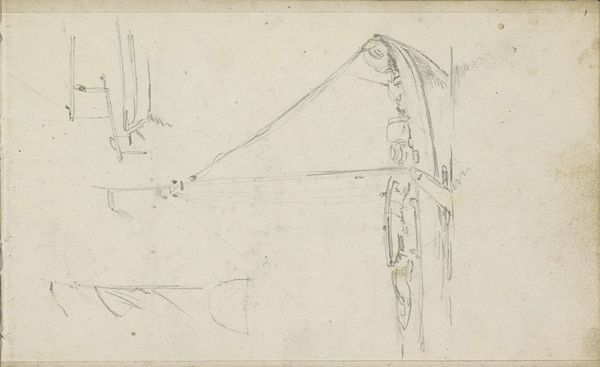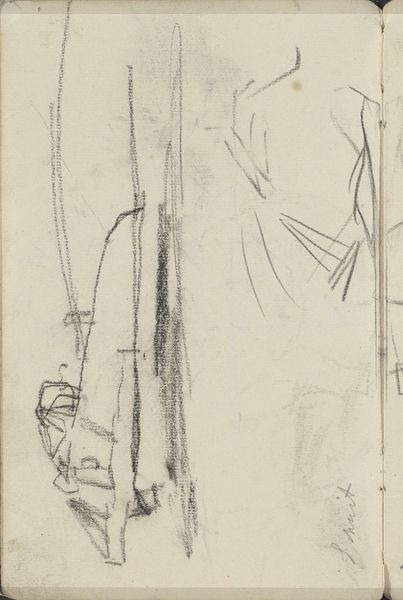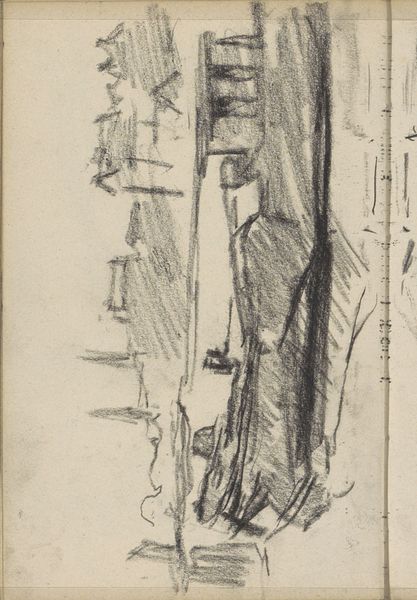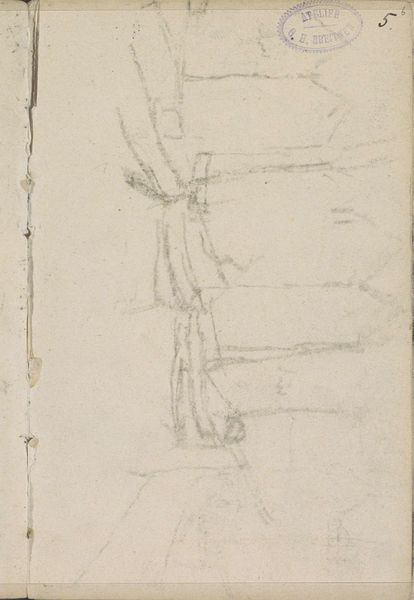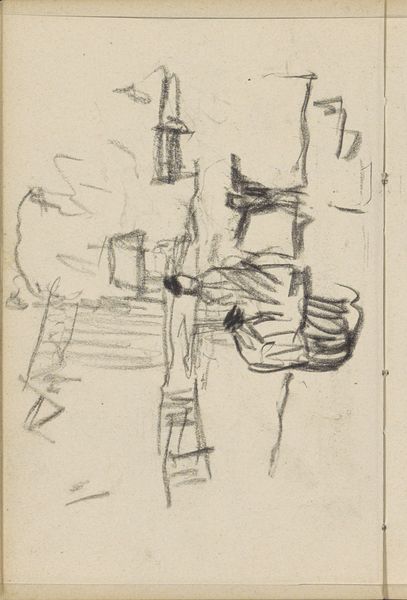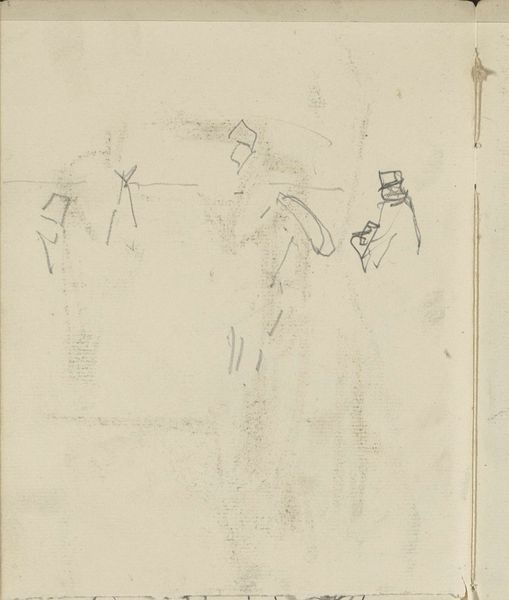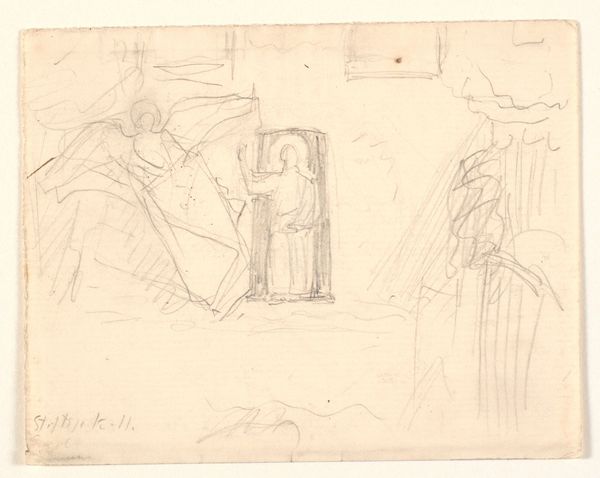
drawing, paper, pencil
#
portrait
#
drawing
#
aged paper
#
toned paper
#
light pencil work
#
quirky sketch
#
impressionism
#
sketch book
#
figuration
#
paper
#
personal sketchbook
#
sketchwork
#
pen-ink sketch
#
pencil
#
sketchbook drawing
#
sketchbook art
Dimensions: height 158 mm, width 247 mm
Copyright: Rijks Museum: Open Domain
Editor: This is "Two Women by a Gate," a pencil drawing by Willem Cornelis Rip, made between 1876 and 1877. It has a certain… immediacy, doesn't it? Almost like we're peeking into someone's private sketchbook. What strikes you most about this work? Curator: The sketch's intimate scale draws me in. It feels less like a formal portrait and more like a fleeting observation. The quick lines and tonal variations create a sense of everyday life in rural communities, and I am drawn to how these figures are framed by their socio-economic environment. How might we interpret these figures given the rigid gendered expectations of the late 19th century? Editor: You’re right, it does feel observational. One woman gestures, pointing, while the other is reserved with her arms crossed, is she looking out at her field? Curator: Exactly. The gate acts as a threshold – a space between private and public. I think we can look at that gesture – and that gate–as being potent markers of their position. We might ask ourselves, who had the privilege to move freely in that time, and who remained enclosed, by social constraints? The use of a limited palette also speaks volumes to that. How does the muted nature of the work inform your understanding of this period? Editor: That’s a great question. The limited palette does mute the narrative, almost flattening their individual stories, suggesting a certain monotony? It's subtle, but the composition feels laden with unseen societal boundaries, expectations for woman. I also note what seems to be numerical calculations, notes, almost like a log; fascinating, any insight into that? Curator: Good eye. The numbers give us insights into the labor they had and give us an idea of the cost associated with that labor. They are literally counting their livelihood here, that certainly speaks to how these woman navigate, persevere and succeed despite systemic inequalities. Editor: Looking closely really unlocks it. It reveals narratives beyond the surface level. Curator: It’s through understanding those power dynamics, historical and economical systems that art can truly speak to our present moment.
Comments
No comments
Be the first to comment and join the conversation on the ultimate creative platform.
